Actions to achieve climate targets
Landwirtschaftliche Rentenbank will take the following actions to reduce emissions and increase avoided and sequestered emissions until 2030 and beyond:
Incentivisation of sustainable investments
Rentenbank incentivises investments in sustainable technologies and farming practices by granting subsidised interest rates in the “Sustainability” and “Areas of Future Development” programmes.
Financing of modern technologies in agriculture
We help farmers and agricultural enterprises invest in technologies to reduce emissions. Such investments may be used to purchase emission-reducing machinery, precision farming equipment, or technologies to increase energy efficiency. Besides reducing emissions, these technologies also increase productivity and improve resource efficiency in agriculture.
Promotional project example: Low-emission fertilising techniques
Conventional fertilisation techniques tend to spread fertiliser over wide areas of land, leading to greater inefficiencies in nitrogen exploitation. Consequently, more nitrogen can react with the atmosphere and produce ammonia. In addition to the greater ammonia losses released into the atmosphere, nitrogen can also be flushed more easily into groundwater as a result of rain.
By contrast, low-emission techniques such as precise under-root fertilisation lessen the negative impacts of excess nitrogen. In under-root fertilisation, the fertiliser is injected directly into the plants’ root zone, often in combination with modern sensors and GPS-controlled application. Another variation involves organic fertilisers such as liquid manure, which is applied with specialised drag hose or injector tools. These techniques spread the fertiliser directly onto or into the soil, causing less ammonia to be released into the air and minimising the formation of nitrous oxide. The plants absorb the nutrients better, fewer climate-harmful gases are released, and adverse environmental impacts are lessened. We help farmers invest in such innovative technologies by granting them more favourable interest rates.
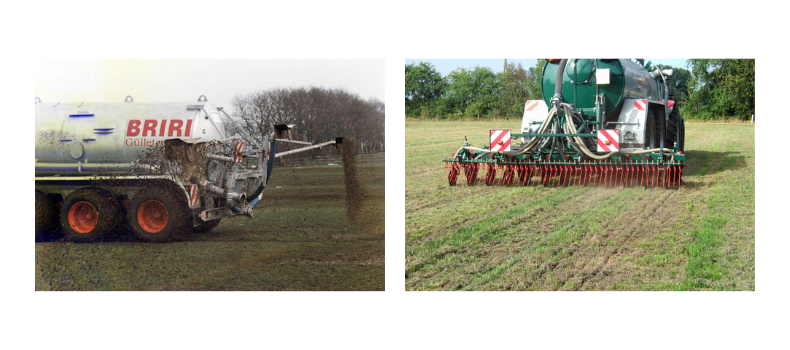
Figure 11: Liquid manure application using a broadcast spreader (left) and an injector tool (right). With the injector tool, liquid manure is applied close to the ground so that it reacts less with the atmosphere and results in lower ammonia emissions. // Source: Landwirtschaftskammer Nordrhein-Westfalen
Expansion of renewable energy
Rentenbank will seek to increase its financing of renewable energy projects in the coming years. Such projects include wind turbines, photovoltaic systems, and biogas plants. Increasing the share of farmyard manure in the biogas substrate avoids emissions from fossil energy use and reduces emissions resulting from the storage of farmyard manure.
Natural climate change mitigation
With the aid of various promotional projects, including some in collaboration with the General Federal Ministry for Environmental Protection and Consumer Protection, Rentenbank supports climate change mitigation projects that contribute to the reduction of greenhouse gas emissions by means of carbon sequestration. Such projects are aimed at reforestation, the renaturation of peatlands, the expansion of organic farming, and the financing of soil-conserving tillage devices to promote humus formation in the soil.
Promotional project example: Climate-adapted forest restructuring
By absorbing CO2 from the atmosphere and storing carbon in the form of biomass, forests can serve as global carbon sinks that help mitigate climate change. According to the German Federal Forest Inventory 2022, however, German forests are no longer considered to be CO2 sinks, due in part to the fact that forests are being progressively weakened by pests, diseases, and extreme weather events like drought and storms, which reduces their ability to store carbon. In addition, the total mass of forests is diminishing as more trees are dying and the formation of new forest land is progressing at a slower place.
To restore the ability of forests to serve as effective CO2 sinks, we support investments in afforestation and climate-adapted forest restructuring by offering loans with the best possible terms. Such projects involve the planting of climate-resilient species of trees that are better adapted to the changed environmental conditions and the promotion of healthy forests that store carbon more securely over a longer period of time. Thus, forests can serve the purposes of both climate change mitigation and long-term climate change adaptation.
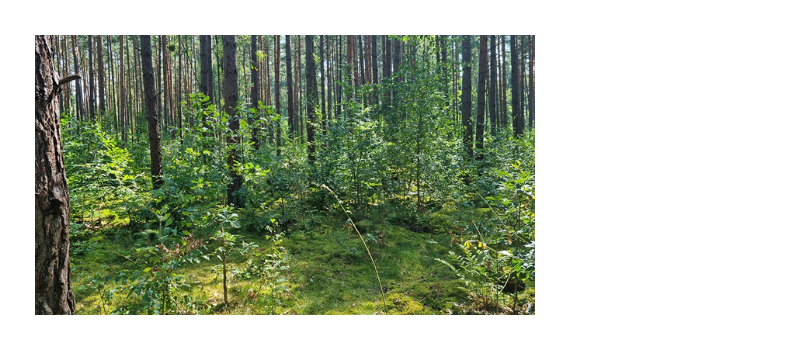
Figure 12: Young stock of trees to replenish a forest. // Source: https://www.myclimate.org/
Promotion of innovative products
Our climate change mitigation efforts are not limited to the financing of cutting-edge technologies. Innovation and technological progress are needed to ensure the competitiveness of agricultural enterprises while also combatting climate change and promoting resource conservation. The agribusiness and food industry makes an important contribution to the attainment of climate targets in agriculture and beyond. It develops products and technologies that are crucial for reducing emissions in many areas of agriculture and therefore make an indirect contribution to the decarbonisation of this sector.
Promotion of innovation
Rentenbank will therefore step up its efforts to promote innovation and new technologies to make the agribusiness and food industry sustainable and therefore viable for the future. To facilitate the commercialisation of innovative ideas, we promote agriculture-related start-ups in the early financing phase from the “German federal government’s special-purpose fund administered by Landwirtschaftliche Rentenbank” (Special-Purpose Fund). The promotion entails a low-interest subordinated loan for an amount of up to EUR 800,000 per applicant in combination with a grant for consulting services (innovation voucher). This creates an incentive to develop innovations and new business models in the agribusiness and food industry.
Promotional project example: AI.Land
DAVEGI is an innovative agricultural robot from the start-up AI.Land, which automates vegetable production and makes it more sustainable. It works on a circular track installed around the cultivation area. From this track, the robot fertilises, cares for, and monitors each and every plant throughout the entire cultivation process from sowing to harvest. This kind of high-precision work reduces the use of fertilisers and therefore lowers emissions from fertiliser production and fertilisation. Highly precise tillage also improves humus formation, thereby storing CO₂ in the soil. Equipped with photovoltaic panels, DAVEGI is self-sufficient in terms of energy and produces no emissions. It boosts productivity by reducing cultivation and harvest losses and making more efficient use of a given cultivation area. Rentenbank supports start-ups like AI.Land in the early financing phase with subordinated loans in combination with a grant for consulting services.
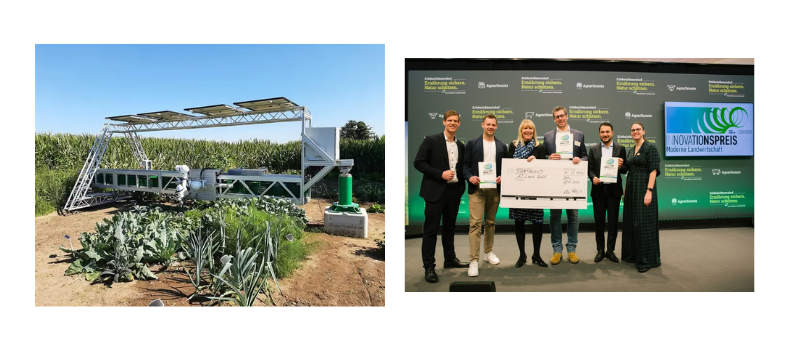
Figure 13: Founded in Kempen (NRW) in 2020, the start-up AI.Land has developed a full-farming approach to vegetable cultivation. AI.Land received the Modern Agriculture Innovation Award in 2023 for its patented device called DAVEGI, which is used as a harvesting robot for seasonal vegetables and strawberries that combines technologies from agro-photovoltaics and agro-robotics. // Source: https://a-i.land/en/davegi
Venture capital
Our investments in venture capital funds are geared to SFDR Article 8 and 9 funds, which support innovative start-ups that develop effective solutions for the challenges faced by the agriculture sector. We put a particular emphasis on investment strategies that advance climate-friendly innovations across the value chain – from sustainable production and resource efficiency to low-emissions processing and logistics and on through to conscious, well-informed consumer behaviour.
Promotional project example: Green Generation Fund
One example of such an investment is the Green Generation Fund (GGF). This Article 9 fund specialises in supporting start-ups whose ideas accelerate the transformation of food systems, reduce global emissions, and improve resource security. Aside from offering financial incentives, these sustainable investments also have a positive influence on society and the environment. An exemplary start-up in the GGF portfolio is Reverion. The founders of this start-up have developed a micro-power plant on the basis of high-temperature fuel cells, which doubles the electrical output of conventional biogas plants. This makes it possible to generate much more electricity from the same quantity of biomass, reducing the need for fossil fuels to generate electricity and thus also lowering CO2 emissions. This technology also allows for targeted CO2 separation from the process, thus creating a carbon-negative energy-generating cycle.
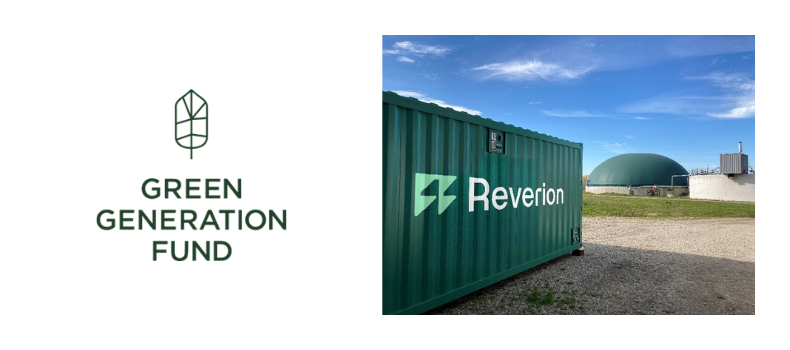
Figure 14: The Green Generation Fund invests in innovative food-tech and green-tech start-ups with the goal of creating a resilient, decarbonised society and advancing climate change mitigation. // Sources: https://greengenerationfund.com/ and https://reverion.com/
Strategic initiatives
WALD-Initiative

Figure 15: WALD Initiative
The WALD Initiative (Weltweite Allianz für Landschaftsbasierte Dekarbonisierung, Worldwide Alliance for Landscape-based Decarbonisation) is a joint initiative of Landwirtschaftliche Rentenbank and the development bank KfW. The goal of this initiative is to mobilise private capital to strengthen and preserve natural ecosystems. To this end, the climate change mitigation value of eco-systems is highlighted and companies are encouraged to support them financially. A key objective is to promote market mechanisms that reward the climate performance of German ecosystems. In the first step, support is given to forestries with the aim of establishing climate-resilient and biodiverse forests. This activity is carried out in the voluntary carbon market, which is currently unregulated in Germany. Support is given in the form of voluntary financial contributions to promote climate change mitigation (“contribution claims”).
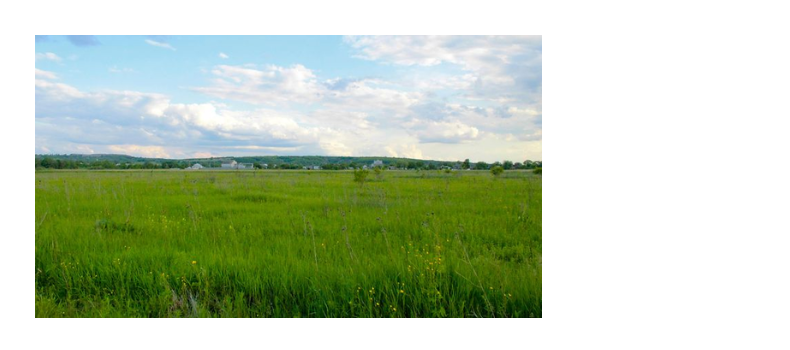
Figure 16: Farmland with catch crop cultivation. Suitable for measuring and quantifying carbon sequestration in agricultural soils under DIN-SPEC 3609. // Source: DIN - German Institute for Standardizationhttps://www.din.de/de/
DIN-SPEC Carbon Farming
In August 2022, moreover, we joined a consortium with Klim GmbH, K + S AG, and other companies to develop a DIN-SPEC. This preliminary step to establishing a DIN standard bears the title “Quantification and Assessment of Organic Carbon Capture and Greenhouse Gas Emissions Change from the Adapted Use of Agricultural Soil and Land”. The objective was to steer the many existing private-sector initiatives in the same direction, render them comparable, and develop constructive solution proposals for national and European-level debates. The framework produced as a result of this work was published in November 2024.
Functional specification for classifying greenhouse gas emissions
Landwirtschaftliche Rentenbank published the document “Functional Specification and User’s Guide to Classifying Greenhouse Gas Emissions When Lending to Agricultural Customers” in 2024. This functional specification serves as a guide to help the lending banks classify the greenhouse gas emissions of agricultural enterprises and systematically assess transition risks and ESG aspects. It was developed in collaboration with agriculture trade associations to ensure that their challenges are met. A particular challenge in assessing greenhouse gas emissions is the highly complex interplay of biological processes. Conceived as a practical instrument, the functional specification provides background information, along with nine qualitative questions, to aid in the evaluation of borrowers. A number of banks have since taken to using the questions set out in the functional specification to assess the individual risks associated with the emissions activity of their agricultural customers.